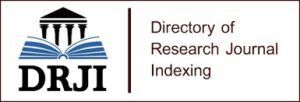Accessibility Analysis of Waste Collection Facilities (WCFs) in Maoming City Based on Grid G2SFCA Method
With continuous socio-economic development and changes in consumption patterns, urban and rural areas are facing an increasing amount of domestic waste, and it is increasingly important for governments to improve the accessibility of waste collection facilities (WCFs) when planning environmental sanitation construction schemes. This paper evaluates the accessibility of WCFs in Maoming City, Guangdong Province, based on the grid-based Gaussian two-step movement search method (G2SFCA) and spatial analysis. The study shows that the correlation between the existing WCFs and the traffic road network is strong, and the correlation with the population is weak. When planning and constructing in the future, more attention should be paid to the central location of the area and the factors of population distribution.
KEYWORDS: Gaussian Two-step Floating Catchment Area Method (G2SFCA); Geography Information System (GIS); Accessibility; Waste Collection Facilities (WCFs); Kernel Density Analysis (KDA)




















